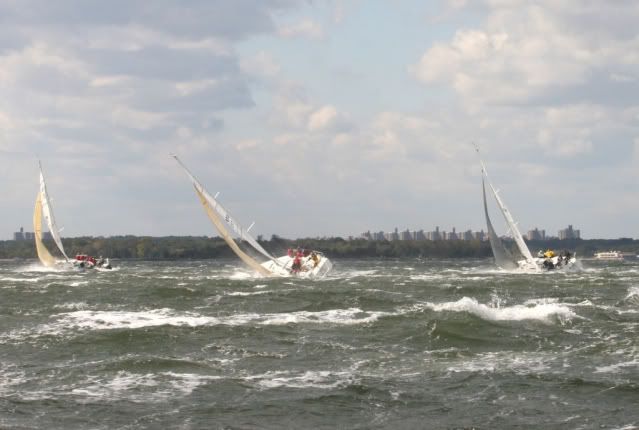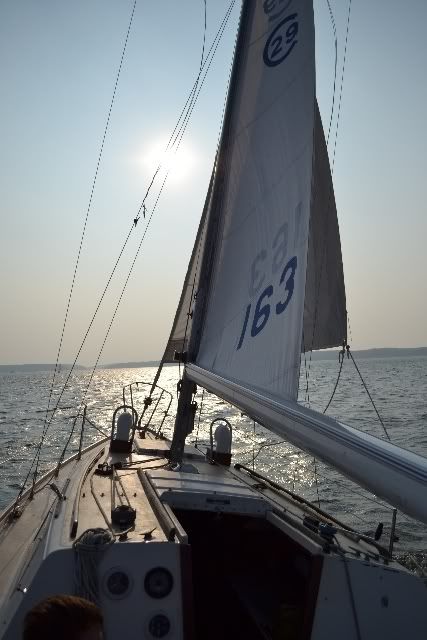This spring I swapped out my old POS furler and genoa, and went with hank-ons.
I have no regrets. I have been putting up and taking down my new (to me) hanked-on foresails. It is not really that hard at all. I kind of like it to be honest. And now I can sail in whatever winds I want, because switching out the foresails is now easy. My roller furling genoa was IMPOSSIBLE to take down/put up, even in the slip, if there was any wind to speak of. Getting the luff in and out of that narrow slot in the foil just wouldn't happen when you really needed it to. Now when conditions change I easily swap out the foresails. I have been sailing in these great winds lately only because of this. A "reefed" roller furling genoa is just a parachute tied to your bow, once it is rolled in more than 10-15%...
I tied on some thin line crisscrossing between the lifelines and the toe rail in the forward area of the bow. This acts like a net so the jib can't fall into the water, it's what the racing boats do in all the youtube videos lol and is a hell of a lot cheaper than WM "lifeline netting".
I post this because last year I was worried about going to hank-ons. I thought it would be SUCH a PITA, but the reality is that it is not that bad at all. Even lowered, the jib can just be lied down flat along the rail (inside the netting) and bungeed to the toe rail.
My point is, all you newbies out there who, like me, have oooold roller furlers and genoas that limit your sailing, switching to hank-on is not nearly as bad as some say.
I have no regrets. I have been putting up and taking down my new (to me) hanked-on foresails. It is not really that hard at all. I kind of like it to be honest. And now I can sail in whatever winds I want, because switching out the foresails is now easy. My roller furling genoa was IMPOSSIBLE to take down/put up, even in the slip, if there was any wind to speak of. Getting the luff in and out of that narrow slot in the foil just wouldn't happen when you really needed it to. Now when conditions change I easily swap out the foresails. I have been sailing in these great winds lately only because of this. A "reefed" roller furling genoa is just a parachute tied to your bow, once it is rolled in more than 10-15%...
I tied on some thin line crisscrossing between the lifelines and the toe rail in the forward area of the bow. This acts like a net so the jib can't fall into the water, it's what the racing boats do in all the youtube videos lol and is a hell of a lot cheaper than WM "lifeline netting".
I post this because last year I was worried about going to hank-ons. I thought it would be SUCH a PITA, but the reality is that it is not that bad at all. Even lowered, the jib can just be lied down flat along the rail (inside the netting) and bungeed to the toe rail.
My point is, all you newbies out there who, like me, have oooold roller furlers and genoas that limit your sailing, switching to hank-on is not nearly as bad as some say.








